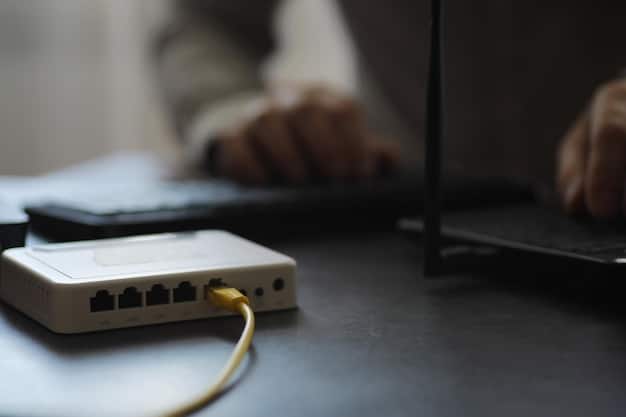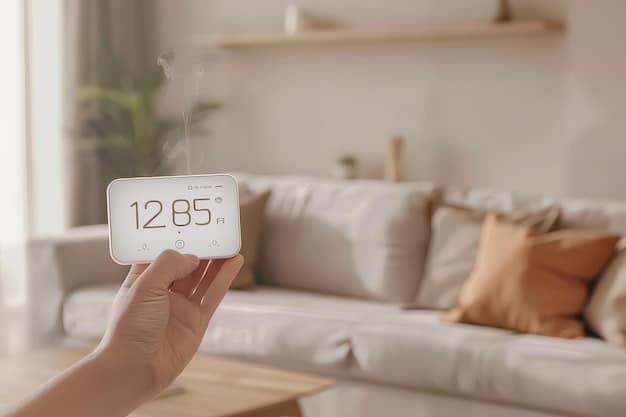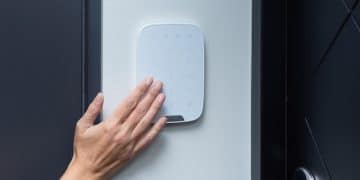Smart Home Troubleshooting: Quick Fixes to Get Back Online

Smart Home Troubleshooting: Fix Common Issues and Get Your System Back Online involves diagnosing and resolving connectivity, device malfunction, and software glitches to ensure your smart home operates smoothly.
Smart homes are designed for convenience, but sometimes things go wrong. Let’s get to the business of Smart Home Troubleshooting: Fix Common Issues and Get Your System Back Online so you can enjoy the seamless experience you invested in!
Understanding Common Smart Home Issues
Smart homes, while innovative, aren’t immune to problems. Understanding the common issues is the first step in effective troubleshooting. Recognizing these challenges can save you time and frustration.
Connectivity Problems
One of the most frequent issues is connectivity. Devices need a stable internet connection to function properly. This involves checking your Wi-Fi network and ensuring all devices are within range.
Device Malfunctions
Sometimes, the problem lies within the individual device. This could be due to software glitches, hardware failures, or simply needing a reset.

- Check your Wi-Fi router for a stable connection.
- Ensure all smart devices are within the router’s range.
- Restart devices to resolve temporary glitches.
Effective troubleshooting starts with identifying the root cause of the problem. Knowing where to look saves time and effort. Addressing these issues promptly keeps your smart home running smoothly. Now that we have some basic understanding, we can delve into some of the methods.
Basic Troubleshooting Steps for Smart Home Devices
Before diving into more complex solutions, it’s crucial to try some basic troubleshooting steps. These simple fixes often resolve many common issues and can save you from unnecessary technical headaches.
Restart Your Devices
Often, a simple restart can resolve temporary glitches. Turn off the device, wait a few seconds, and then turn it back on. This can refresh the system and restore functionality.
Check Power Connections
Ensure that all devices are properly connected to a power source. Loose or faulty connections can prevent devices from working correctly. Verify everything is plugged in securely.

- Unplug the device from the power source for a few seconds.
- Plug it back in and wait for it to reboot.
- Check for loose or damaged power cords.
Taking these initial steps can quickly resolve many minor issues. They are easy to implement and often effective in getting your smart home devices back online. It is always a good idea to cover the basics first before you spend too much time diagnosing the issue.
Troubleshooting Connectivity Issues
Connectivity problems are a common headache in smart homes. Ensuring a stable and reliable connection is essential for your devices to work seamlessly. Let’s explore the steps to address these issues effectively.
Check Your Wi-Fi Router
Your Wi-Fi router is the lifeline of your smart home. Make sure it’s functioning correctly. Check the router’s status lights and ensure it’s connected to the internet.
Optimize Wi-Fi Range
Sometimes, devices are too far from the router. Consider moving them closer or using a Wi-Fi extender to improve the signal strength. Placement matters for optimal performance.
- Restart your Wi-Fi router to refresh the connection.
- Use a Wi-Fi analyzer app to check signal strength.
- Consider a mesh Wi-Fi system for broader coverage.
Addressing connectivity issues ensures that your smart home devices can communicate effectively. A stable network is crucial for seamless operation. This will also reduce frustration for you as the user, as you will be able to depend on your device.
Fixing Common Device-Specific Problems
Smart home devices sometimes encounter unique problems. Identifying and addressing these device-specific issues can restore functionality and prevent future disruptions. Let’s look at common device-specific issues.
Smart Lights
Smart lights might flicker, fail to connect, or not respond to commands. Resetting the bulb or checking the hub connection can often resolve these issues. Firmware updates are also crucial.
Smart Thermostats
Smart thermostats can have problems with temperature readings or scheduling errors. Calibrating the thermostat and updating the software can improve accuracy. Battery life is also key.
- Check for firmware updates for all your smart devices.
- Reset devices to factory settings if they are unresponsive.
- Replace batteries in devices that require them.
Addressing device-specific problems involves understanding the unique characteristics of each gadget. Regular maintenance and timely updates are essential for optimal performance. This helps ensure the longevity of your devices and their functionality.
Dealing with Software and App Glitches
Software and app glitches can disrupt your smart home experience. Keeping your apps updated and understanding how to troubleshoot common software issues is crucial for seamless operation.
Update Your Apps
Ensure that all your smart home apps are up to date. Developers often release updates to fix bugs and improve performance. Outdated apps can cause compatibility issues.
Clear App Cache
Sometimes, clearing the cache of your smart home apps can resolve glitches. This removes temporary files that might be causing problems. A fresh start can improve performance.
- Reinstall apps to resolve persistent software issues.
- Check for compatibility issues between apps and devices.
- Contact customer support for unresolved software problems.
Addressing software and app glitches ensures that your smart home system operates smoothly. Regular updates and maintenance are key to preventing disruptions. Having the most current software ensures your gadgets are all working together.
Advanced Troubleshooting Techniques
When basic troubleshooting doesn’t suffice, more advanced techniques might be necessary. These methods can help diagnose and resolve complex issues that are affecting your smart home.
Factory Reset
A factory reset returns the device to its original settings. This can resolve persistent software issues or configuration problems. Be sure to back up any important data first.
Check for Interference
Interference from other devices can disrupt the signals of your smart home gadgets. Identify and eliminate potential sources of interference. This can improve connectivity and performance.
- Use diagnostic tools to identify network bottlenecks.
- Consult online forums or communities for specific device issues.
- Consider professional help for complex troubleshooting.
Employing advanced troubleshooting techniques can help you tackle more challenging smart home problems. A systematic approach can lead to effective solutions. These troubleshooting tips can help you quickly diagnose and fix the issues so you don’t have to call in the experts right away.
| Key Point | Brief Description |
|---|---|
| 🔄 Restart Devices | Reboot smart devices to clear temporary glitches. |
| 📶 Check Wi-Fi | Ensure stable Wi-Fi connection; optimize router placement. |
| 📱 Update Apps | Keep smart home apps updated for bug fixes and improvements. |
| 🛠️ Factory Reset | Reset devices to original settings for persistent issues. |
Frequently Asked Questions
▼
Flickering smart lights may be due to a loose connection, outdated firmware, or interference. Ensure the bulb is properly installed, update the firmware, and check for any electrical interference.
▼
To improve your smart home Wi-Fi signal, move your router to a central location, reduce physical obstructions, and consider adding a Wi-Fi extender or mesh network to boost coverage.
▼
If your smart thermostat is inaccurate, calibrate the device according to the manufacturer’s instructions. Also, ensure it is placed away from direct sunlight and heat sources, and update the firmware.
▼
You should update your smart home apps as soon as updates are available. These updates often include bug fixes, performance improvements, and new features that enhance your smart home experience.
▼
A factory reset returns a device to its original settings. Use it when troubleshooting persistent issues or before selling/disposing of the device. Remember to back up important data beforehand.
Conclusion
Troubleshooting your smart home doesn’t have to be daunting. By understanding common issues and applying these troubleshooting steps, you can quickly resolve problems and ensure your smart home operates seamlessly.





